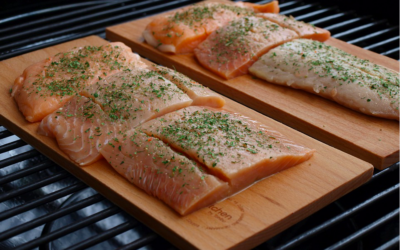If you’re reading this, I’m sure you have heard of meal prepping before, and you may have even thought of giving it a try. For those of you who need the push to begin prepping your meals – this is it!
Meal prepping has changed the game for many of my clients, as well as for myself- and I couldn’t recommend it more! Preparing meals or meal components in advance can help you save time and money, as well as giving you a meal framework to stay consistent with your health goals.
What is Meal Prepping?
Meal prep consists of planning and preparing your meals ahead of time so that your food will be ready to eat for a busy week ahead. This process takes some time and effort, but is not as labor intensive and time consuming as you may think. In reality, you can meal prep and cook for the whole week in under an hour, and you will likely thank yourself when you have a fridge and pantry full of nourishing prepared meals and snacks.
There are many different ways to go about meal prepping depending on your individual needs.
You don’t necessarily need to prepare every single meal for the week all in one day. If you enjoy a freshly cooked dinner, meal prepping could simply meal chopping your veggies, preparing your spice mixes, and marinating your proteins in advance so you can cut down on the time spent making dinner after a long day. It can also mean preparing general meal components – such as proteins, veggies, grains, or dressings – in advance for quick assembly of mix-and-match meals later on. Meal prepping looks different for everyone, so it may take some experimenting to learn how you want to utilize it to best suit your needs.
Why Meal Prep?
Meal prepping takes the guess work out of making daily food decisions. Imagine coming home after a long, exhausting day, when all you want to do is order a pizza and call it a night. If you already have your meals prepared, you’ll have dinner ready for when you need it so you can stay aligned with your nutrition goals and avoid ordering last minute takeout. Not to mention, you can save yourself hours worth of preparing, shopping, and cooking during the week and eliminate the decision fatigue associated with thinking of new healthy meal ideas to make every day. Meal prepping can also save you money, as you can plan meals according to your budget with no wasted ingredients along the way.
Where Do I Begin?
Before you start preparing meals, one important thing to consider is how you will store your meals and snacks. I recommend starting off by investing in high quality containers to store your food in. Stainless steel or glassware containers are good options, as standard plastic containers can add unwanted chemicals to your food. Pyrex glass containers are microwave-safe and can help keep food fresh for longer than plastic containers as well. Mason jars are perfect for small salads, smoothies, dressings, overnight oats, soups, vegetables, and fruit. For lunches, Bento boxes are great for storing multiple components in one container. You can also use resealable silicone storage bags or other BPA-free containers for light storage.
Now, for the fun part – planning and preparing meals! Here are 4 easy steps to meal prepping:
1. PLAN
Set aside one or two days to write down what you would like to eat for a few days or for the entire week. Make sure to involve your family, roommates, or whoever you’re eating meals with in the meal decision process. When planning your meals, consider if it will be a busy or slow week, if you’ll need grab and go meals, if you’ll be traveling, or if there are any other considerations that will effect the kind of meals you need to prepare. Don’t forget to plan your snacks as well! You can also schedule in “flex meals” or times when you may be eating a meal outside of your meal plan.
2. CREATE A LIST
Write your grocery list. Consider what you will need from the menu you created for yourself, and write an itemized list ordered based on the sections of your grocery store.
3. TAKE INVENTORY AND SHOP
Take stock of what ingredients you have in your house already, and then go grocery shopping for items that you don’t already have. Put all the food away right when you get back from the grocery store, and organize foods in places that are easily accessible to you.
4. GET COOKING!
Look at your meal plan and think about any meal components that can be prepared in advance. This could include portioning out snacks, chopping vegetables, cooking your proteins and grains, making dressings, pre-portioning ingredients, etc. Put on some music or your favorite podcast and prep away!
Go For It!
Here are just a couple of nourishing, delicious recipes that I like to make and can hopefully give you some inspiration to help you start prepping!
- Mediterranean Chickpea Salad
- Lemon Berry Yogurt Breakfast Bowls
- Greek Couscous Salad
- Chicken Burrito Bowls
- Kale and White Bean Power Bowls
If you need more ideas, Budget Bytes is full of budget friendly recipes that are relatively healthy and can be modified to better suit your health goals. This site also includes grocery lists and storage information to make planning even easier for you.
If you need some extra help to get started, I am here to help you! We offer personalized meal plans that include grocery lists, step-by-step recipes, meal prepping guides, and guidance to help make meal planning and prepping a breeze. Email or call us to schedule a consultation today!




